Getting an eye prosthesis
The ophthalmologist gives permission to fit the eye prosthesis. The customer usually receives the prosthesis free of charge as medical rehabilitation based on the initiative taken by the doctor. The Social Security reimburses the cost of acquiring an eye prosthesis as part of medical rehabilitation.
Depending on the care responsibilities, the approval of the payment commitment is decided either at the health centre or in the hospital.
The State Accident Office pays for the costs of accidents during military service and conscription.
Costs are reimbursed by insurance companies in a number of accidents at work or on the roads and in similar cases of liability. You can apply for compensation from KELA afterwards
travel and overnight expenses.
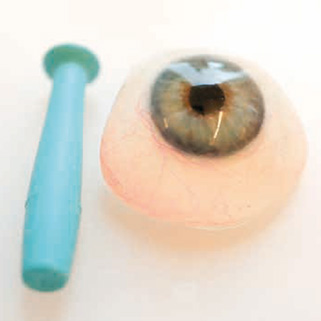
Usage
The eye prosthesis is safe and easy to use. The prosthesis protects the eye socket from dehydration and prevents the edge of the eyelid with eyelashes from turning inside the socket. The prosthesis also supports the eyelids.
How is the prosthesis used?
- Eye prostheses can be kept in the eye socket at all times, even when sleeping.
- They can be used normally in the shower and sauna
- Swimming glasses should be worn when swimming, especially when diving
- Vigorous rubbing should be avoided, especially outwards, as such movement may turn the prosthesis into the wrong position
- Excessive stretching of the lower eyelid may cause the prosthesis to protrude from the eye socket
We recommend that you contact your doctor as soon as possible if you notice any inflammation, bruising or other abnormalities in your eye socket. In this case, you can disinfect the prosthesis as home treatment, for example, with Neo-Amisept, a product available in pharmacies. You can always contact us to check the fit and surface of the prosthesis.
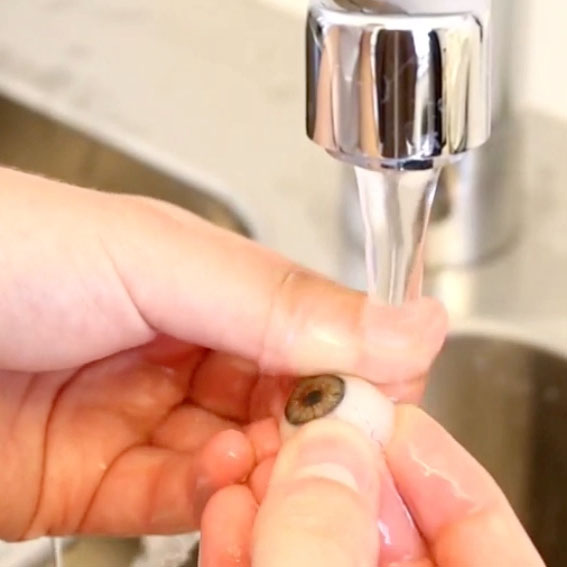
Cleaning
In the beginning, the eye prosthesis should be cleaned daily, whereby you will also get used to putting it on and taking it off. Later, the prosthesis is cleaned only as needed.
How do you clean the prosthesis?
- Wash with water and liquid soap
- Avoid using a brush for cleaning as it will scratch the surface of the prosthesis.
- The surface of the prosthesis can be disinfected at home (e.g., with Neo-Aminept)
- Always rinse the prosthesis at the end with drinking water
- Artificial tear drops should be used with the prosthesis, especially if the eye socket dries easily
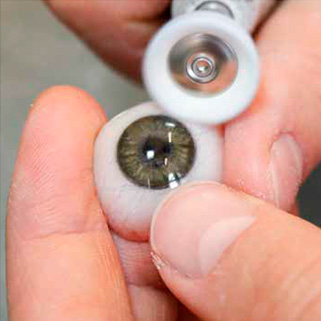
Polishing
The eye prosthesis is cleaned and polished mechanically in our workshop, while the customer waits. The visit will take about 30 minutes. The prosthesis can also be sent by post for polishing.
When should I book a prosthesis polish?
- Home remedies do not help and the surface of the prosthesis does not feel slippery
- The prosthesis is scratched or cracked
- Roughness is felt under the eyelids
- The surface of the prosthesis has become cloudy
- There is a marked increase in lacrimation or bruising
We recommend booking a prosthesis polishing appointment once a year. At the same time, the fit and calm general appearance of the prosthesis are checked.
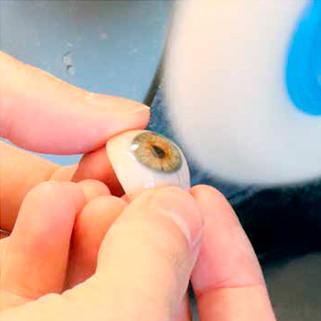
Adjusting
The eye socket and even your own eye colour may change to the extent that the prosthesis needs adjusting. In this case, both the size and colour of the eye prosthesis can be modified.
When should I book a prosthesis adjustment?
- Less than five years have elapsed since the manufacture of the prosthesis
- The gaze direction of the prosthesis is not natural
- Eyelids open too much or too little
- The bottom of the eye socket/eyelid pockets have changed
- Due to natural changes in the face, e.g. child growth, lifestyle changes
- After orbit and eyelid surgeries
- The prosthesis is poorly held in place or can turn into the wrong position
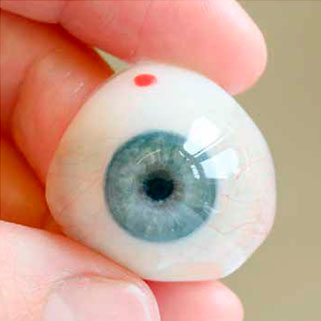
Service life and renewal
We recommend a new eye prosthesis every five years. During this time, the eye socket and even your own eye colour may change to the extent that the prosthesis needs to be replaced. Although the plastic used for the prosthesis is a durable material, it does not last forever. The plastic will weaken and yellow over time, when it is no longer advisable to repair it.
When should I renew the prosthesis?
- Five years or more have elapsed since the manufacture of the prosthesis
- The material of the prosthesis is obsolete and the polishing no longer helps, so that the roughness of its surface maintains a constant inflammation
- Body changes such as changes in weight or pregnancy
- The prosthesis material is yellowed and the colours no longer match the colours of your own eye
- After orbit and eyelid surgeries
- The prosthesis is poorly held in place or can turn into the wrong position
If the customer is unable to come to our workshop, a new eye prosthesis can be prepared based on the old prosthesis. In this case, however, possible errors of the former prosthesis are repeated in the new prosthesis.
Installing and removing the prosthesis
Installing:
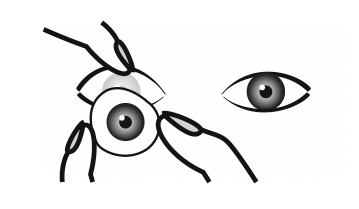
Lift the upper eyelid and place the prosthesis under the upper eyelid.
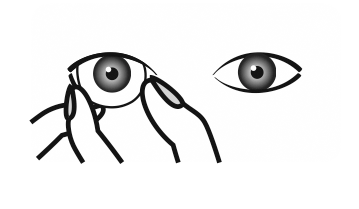
Push the prosthesis upwards and pull the lower eyelid downwards, allowing the prosthesis to settle into place.
Removal with suction pad:
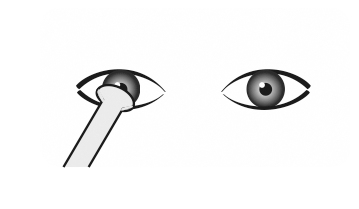
Moisten the suction head and press it onto the surface of the prosthesis.
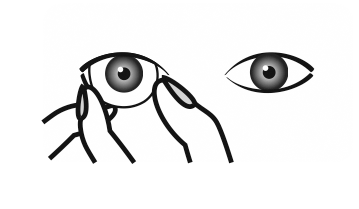
Pull the lower eyelid downwards and lift the prosthesis over the lower eyelid diagonal.
Removal with fingers:
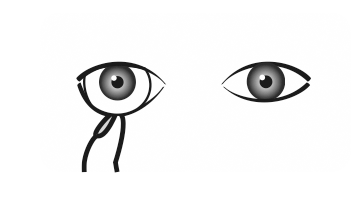
Pull the lower eyelid downwards while pressing the lower edge of the prosthesis over the lower eyelid with your finger.
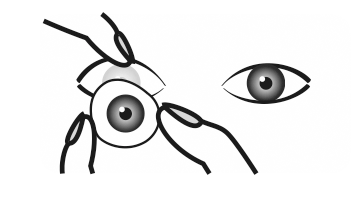
Lift the upper eyelid and grasp the prosthesis with two fingers to remove it.

